Blog
Helping you Realign with Gravity

In this week’s blog I worked with another client to realign her body toward the Rolfing line. Her thighs showed less flexion, her shoulders were less rounded, and her head sat more naturally above her shoulder girdle. By encouraging her body to organize around a central vertical axis, we made noticeable strides in this session. Our aim is to help each person discover their own inherent balance centered on the concept of "the line." This holistic approach promotes better posture, increased balance, and smoother movement. As Dr. Rolf famously stated, “gravity is the therapist.”
Feeling Better through Rolfing
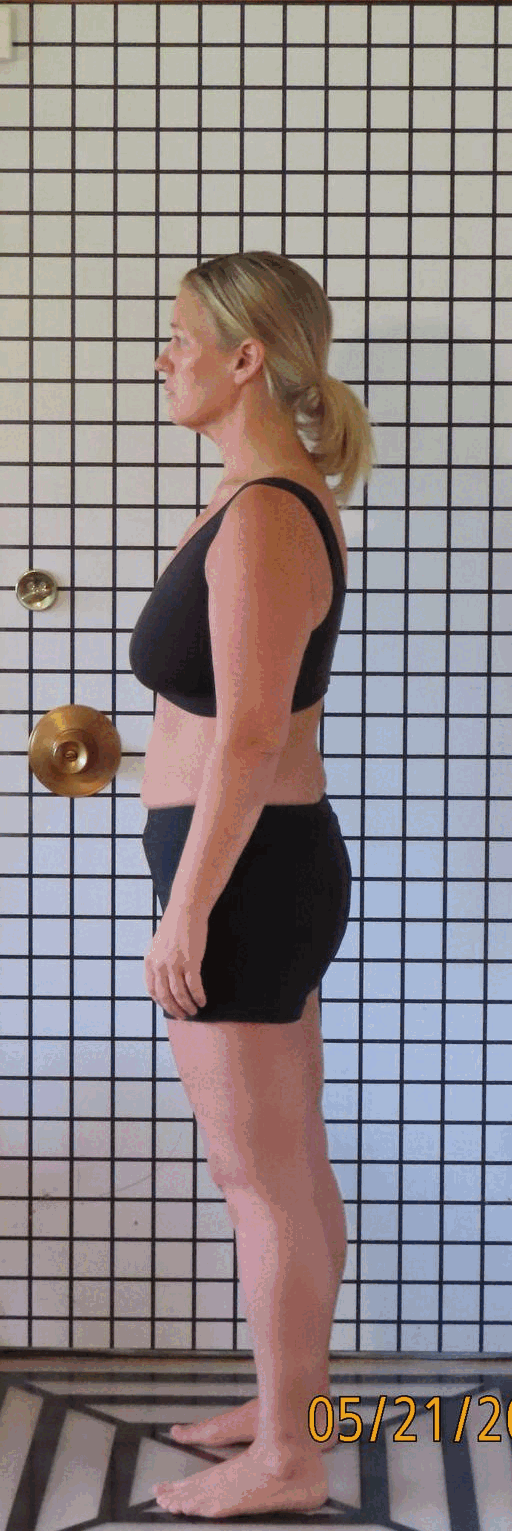 Continuing the discussion from last week’s blog on the Rolfing line, we examine another client case. This example demonstrates decreased thigh flexion and a shift toward a more natural anterior pelvic tilt, resulting in an improved lateral line and enhanced structural stability. These changes contribute to a slight increase in height and overall better alignment. At Rolfing Iowa, we are committed to helping clients achieve improved movement, appearance, and well-being.
Continuing the discussion from last week’s blog on the Rolfing line, we examine another client case. This example demonstrates decreased thigh flexion and a shift toward a more natural anterior pelvic tilt, resulting in an improved lateral line and enhanced structural stability. These changes contribute to a slight increase in height and overall better alignment. At Rolfing Iowa, we are committed to helping clients achieve improved movement, appearance, and well-being.
The Rolfing Line
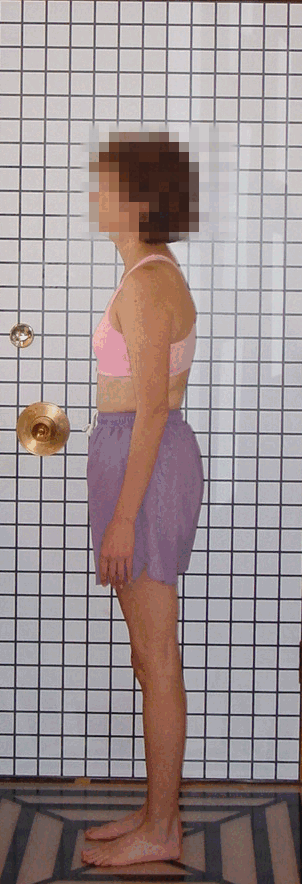 During this session, my client demonstrated notable improvement while moving toward a Rolfing “line” which creates a more effortless upright posture with greater overall stability. There was decreased thigh flexion, a more natural anterior pelvic tilt, reduced rounding of the shoulder girdle, and diminished forward head posture, resulting in an overall substantial shift reflecting elements of the “line” approach. It is important to note that not all clients will exhibit such easily visible changes; however, even in these cases, individuals can perceive meaningful differences in their bodies and experience enhanced fluidity of movement.
During this session, my client demonstrated notable improvement while moving toward a Rolfing “line” which creates a more effortless upright posture with greater overall stability. There was decreased thigh flexion, a more natural anterior pelvic tilt, reduced rounding of the shoulder girdle, and diminished forward head posture, resulting in an overall substantial shift reflecting elements of the “line” approach. It is important to note that not all clients will exhibit such easily visible changes; however, even in these cases, individuals can perceive meaningful differences in their bodies and experience enhanced fluidity of movement.
Working with Octogenarians
 Individuals seek Rolfing for a variety of purposes, including enhancing their mobility. For many octogenarians, the primary motivation might be to maintain balance and reduce the risk of unexpected falls, which can often initiate a series of complications leading to decreased mobility and diminished quality of life. In this session my client shifts dramatically toward a better-balanced structure. Movement is from left to right, with a more horizontal pelvis, which is one of the hallmarks in the Rolfing process, and there is more equal weight distribution through both legs, Rolfing can help clients regain confidence in their movement patterns and foster a greater sense of independence. If you have relatives in this age group, consider referring them to Rolfing Iowa to support their stability.
Individuals seek Rolfing for a variety of purposes, including enhancing their mobility. For many octogenarians, the primary motivation might be to maintain balance and reduce the risk of unexpected falls, which can often initiate a series of complications leading to decreased mobility and diminished quality of life. In this session my client shifts dramatically toward a better-balanced structure. Movement is from left to right, with a more horizontal pelvis, which is one of the hallmarks in the Rolfing process, and there is more equal weight distribution through both legs, Rolfing can help clients regain confidence in their movement patterns and foster a greater sense of independence. If you have relatives in this age group, consider referring them to Rolfing Iowa to support their stability.
Impressive First Session Shift
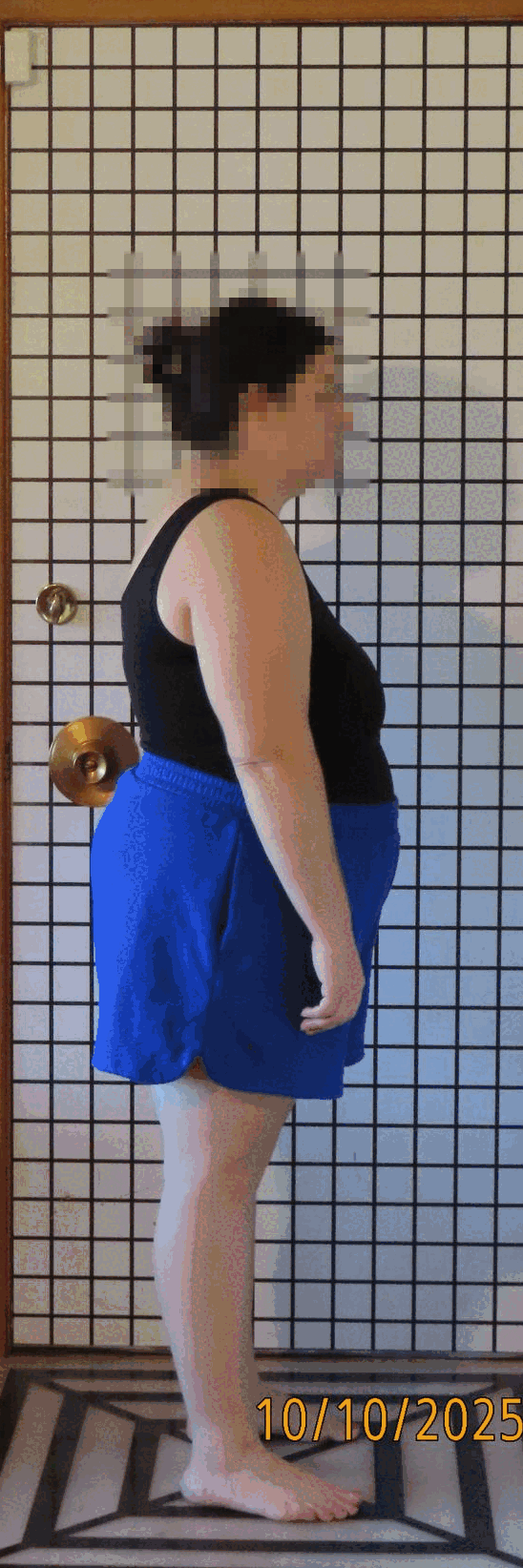 During my client's initial session at Rolfing Iowa, there was notable improvement in vertical alignment. Her head was better positioned above her shoulder girdles, with reduced shoulder rounding and enhanced lift in the pelvic girdle. This bodywork modality is a process-oriented re-education of the body through movement and touch, and it systematically releases patterns of stress and impaired function. Individuals of varying backgrounds and ages seek Rolfing Structural Integration not only for pain and stress relief, but also to optimize their performance and enhance mobility in everyday activities.
During my client's initial session at Rolfing Iowa, there was notable improvement in vertical alignment. Her head was better positioned above her shoulder girdles, with reduced shoulder rounding and enhanced lift in the pelvic girdle. This bodywork modality is a process-oriented re-education of the body through movement and touch, and it systematically releases patterns of stress and impaired function. Individuals of varying backgrounds and ages seek Rolfing Structural Integration not only for pain and stress relief, but also to optimize their performance and enhance mobility in everyday activities.
Basis of Support
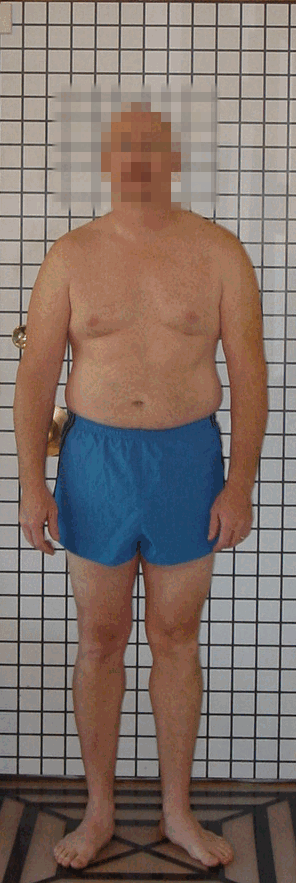
Early in the Rolfing process we are working with the lower legs and feet. Significant changes can occur within a single session, but sustained alignment will require ongoing effort due to long-established posture. The objective is to achieve a more parallel foot orientation and reposition the gastrocnemius muscles toward the back of the lower leg where they belong. Both feet exhibit pronation, with the left showing greater pronation, which necessitates additional attention in future sessions. Here my client’s shift in the feet, and the lower legs provide a more lengthened torso far away from the focus of the session showing how working the lower body has a powerful effect on the upper body.
Physcially Centered
 Ready to take the next step in your wellness journey? Reach out to get on the schedule and begin experiencing the benefits of Rolfing for improved alignment and overall well-being. Whether you’re new to Rolfing or continuing your series, we look forward to helping you get physically centered through the integration process. Returning to a stable and grounded state by focusing on the body’s connection to gravity which involves finding a balanced position and developing awareness of the subtle movement patterns within your body. Pictured you can see my client is positionally biased with too much weight going down her right side and after there is much better weight distribution into the ground with greater overall balance. Clients often report feeling more grounded, lighter, and aware of their bodies after sessions, which facilitates greater ease of motion.
Ready to take the next step in your wellness journey? Reach out to get on the schedule and begin experiencing the benefits of Rolfing for improved alignment and overall well-being. Whether you’re new to Rolfing or continuing your series, we look forward to helping you get physically centered through the integration process. Returning to a stable and grounded state by focusing on the body’s connection to gravity which involves finding a balanced position and developing awareness of the subtle movement patterns within your body. Pictured you can see my client is positionally biased with too much weight going down her right side and after there is much better weight distribution into the ground with greater overall balance. Clients often report feeling more grounded, lighter, and aware of their bodies after sessions, which facilitates greater ease of motion.
Nuanced Shifts
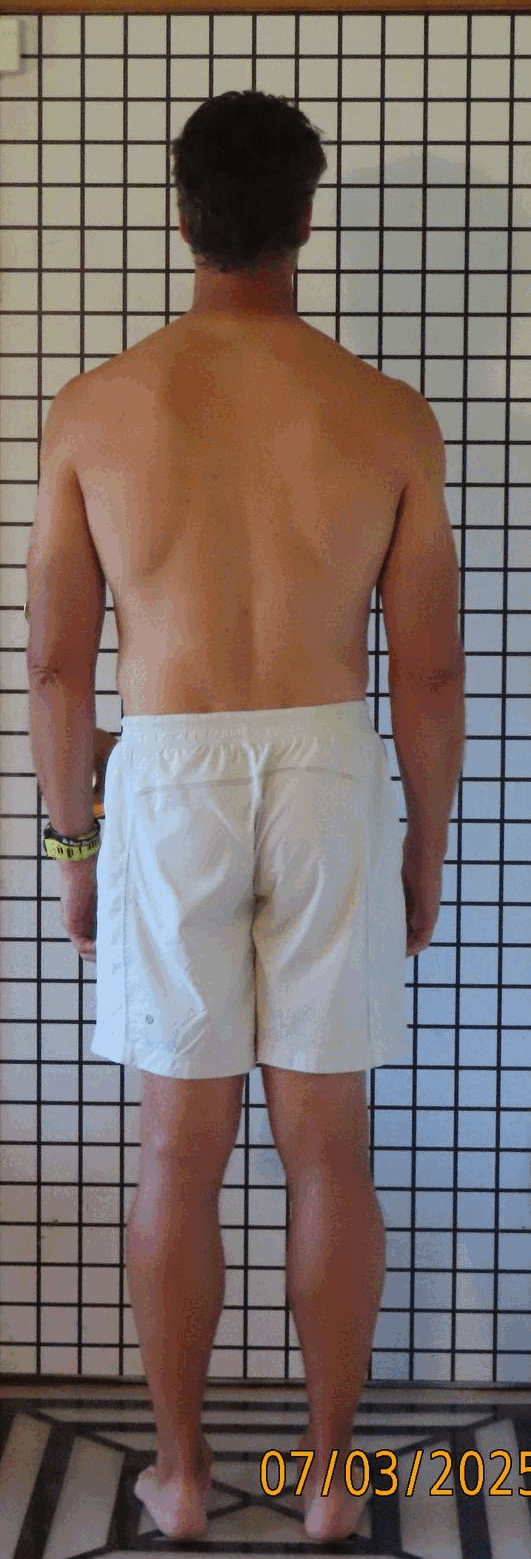 My long-term client has been coming to Rolfing Iowa for sessions for many years and has experienced the ongoing benefits of the work even when changes are subtle yet perceptible, as shown in this example. During this appointment improvements included a more horizontal positioning of his pelvis, and a better balance in his back with movement left to right up his body with a longer posterior neck. My client maintains a disciplined fitness routine and is in excellent shape. Most of us have structures that would benefit from Rolfing where the shifts would be easier to see and can be significant. Most people are not familiar with style of bodywork and be sure to forward this e mail to a friend you think might benefit.
My long-term client has been coming to Rolfing Iowa for sessions for many years and has experienced the ongoing benefits of the work even when changes are subtle yet perceptible, as shown in this example. During this appointment improvements included a more horizontal positioning of his pelvis, and a better balance in his back with movement left to right up his body with a longer posterior neck. My client maintains a disciplined fitness routine and is in excellent shape. Most of us have structures that would benefit from Rolfing where the shifts would be easier to see and can be significant. Most people are not familiar with style of bodywork and be sure to forward this e mail to a friend you think might benefit.
Fractured Ankle
 I have been working with my client to get better balance in her structure from a past injury where she fractured her right ankle and had a plate implanted eight years ago. You can see the strain pattern clearly in the right lower leg and right medial knee. We have made good progress in realigning her right leg, working into the adductor compartment allowing the right leg to shift and in the new position provide much better balance in her structure. In the Rolfing process we are very interested in getting more equal weight distribution down each leg.
I have been working with my client to get better balance in her structure from a past injury where she fractured her right ankle and had a plate implanted eight years ago. You can see the strain pattern clearly in the right lower leg and right medial knee. We have made good progress in realigning her right leg, working into the adductor compartment allowing the right leg to shift and in the new position provide much better balance in her structure. In the Rolfing process we are very interested in getting more equal weight distribution down each leg.
Moving Toward the Vertical Part 5
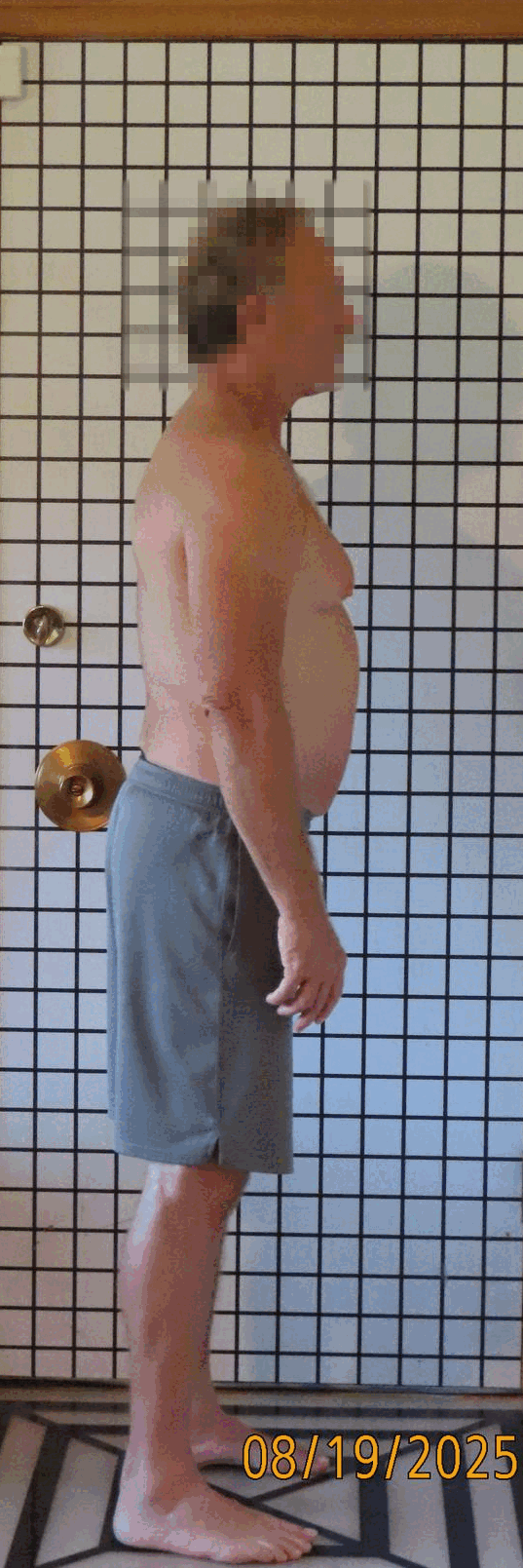 Since we are all on this journey toward greater uprightness, where gravity becomes a primary support mechanism, the topic of vertical alignment remains central. My client is progressing toward a more vertical posture, an ongoing process that occurs both in the background and foreground throughout the series of Rolfing sessions. With less flexion in the thighs, there is increased lift in the upper body as the shoulders move back, and the head aligns over the shoulders. Improved movement patterns and reduced discomfort in problem areas are welcomed outcomes for clients undergoing this bodywork process.
Since we are all on this journey toward greater uprightness, where gravity becomes a primary support mechanism, the topic of vertical alignment remains central. My client is progressing toward a more vertical posture, an ongoing process that occurs both in the background and foreground throughout the series of Rolfing sessions. With less flexion in the thighs, there is increased lift in the upper body as the shoulders move back, and the head aligns over the shoulders. Improved movement patterns and reduced discomfort in problem areas are welcomed outcomes for clients undergoing this bodywork process.



